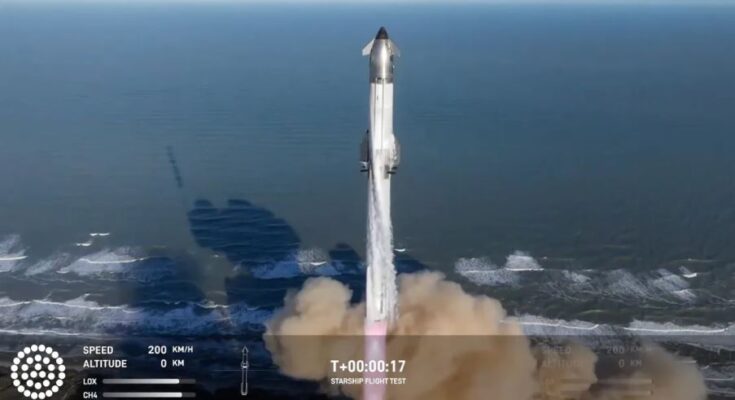SpaceX’s colossal Starship launch system lifted off on its seventh uncrewed test flight Thursday, with an upgraded version of the megarocket embarking on the program’s most ambitious flight to date.
SpaceX was able to duplicate its prior feat of catching a booster that returned to Earth. But 8.5 minutes into flight, the Starship spacecraft itself was lost.
“Starship experienced a rapid unscheduled disassembly during its ascent burn,” the company shared on X, the social media platform formerly known as Twitter. “Teams will continue to review data from today’s flight test to better understand root cause. With a test like this, success comes from what we learn, and today’s flight will help us improve Starship’s reliability.”
A “rapid unscheduled disassembly,” or “RUD,” is a phrase SpaceX typically uses to refer to an explosion. Starship had already climbed 90 miles (146 kilometers) in altitude and was traveling at 13,200 miles per hour (21,317 kilometers per hour), according to the last telemetry data shared by SpaceX.
Aircraft-tracking website Flightradar24 shared on X that the Starship explosion caused its most tracked flights to be “all aircraft holding or diverting to avoid any potential debris.” Meanwhile, posts are appearing on social media showing purported debris from the spacecraft falling over the Caribbean.
The Federal Aviation Administration said flights departing Miami International Airport and Fort Lauderdale-Hollywood International Airport were being delayed for an average of one hour due to a “rocket launch anomaly.” A separate FAA alert said flights were delayed due to “debris.”
“The FAA briefly slowed and diverted aircraft around the area where space vehicle debris was falling. Normal operations have resumed,” according to a statement from the agency.
At 5:55 p.m. ET, 18 minutes after Starship’s launch, a pilot radioed to an air traffic controller at a San Juan air traffic control facility. “We just got a major streak, going from at least 60 miles, there’s all these different colors, just curious. It looked like it was coming towards us, but obviously because of this, just letting you know,” the pilot said.
Meanhile, SpaceX founder Elon Musk shared an image of debris in a post and appeared to make light of the situation, saying “entertainment is guaranteed!”

The Starship spacecraft, stacked atop the Super Heavy rocket booster, took flight at 5:37 p.m. ET (4:37 p.m. local time) Thursday. The rocket booster revved up the 33 engines at its base, sending a loud roar across Starbase, the SpaceX launch site near Brownsville, Texas.
For the first time, one of those 33 Raptor engines had been to space before: SpaceX said it was reusing an engine recovered from the Super Heavy booster flown during the company’s fifth test flight in October.
As the Super Heavy rocket booster — the bottommost section, or first stage, of the Starship system — burned through most of its fuel, SpaceX guided the Super Heavy back to a pinpoint landing at the launch site after it separated from the Starship spacecraft.
The Starship spacecraft ignited its own engines and began soaring through space.



